On Idealogical Mechanics
With respect to defining the notion of an idea (i) within the context of our idealogical mechanics, we start with the very basic premise that what we are describing is reflective of a certain aspect of a complex system, not a physical system necessarily, but an idealogical one,[1] an intellectual one, that has a very close correlation to the physical world even though from a modeling perspective, within the context of our idealogical metaphysics defined herein, it is distinct from a physical system.
We use this word because it sits at the very heart of the Western philosophical tradition, put forward by Plato as eidos, or types, upon which his theory of forms is based upon which sits his whole system of metaphysics more or less. This is the central thread of the western idealistic tradition, which sits in direct contrast to its materialistic cousin whose position was taken up by Aristotle more or less with his notion of substantial form. It is within this context that we land on idea as the basic building block of our system, in a way analogous to where the atom sits on the materialistic side.
Part of what we are exploring here, our intentions if you will of defining an algebraic formulation of ideas and a corresponding geometrical structure within which they can be said to reside, exist as it were from a metaphysical perspective, is the rules, laws and principles which govern the relationship between an idea and its actualized, physical counterpart – a physical state of affairs using behavioral economic parlance, and actualized instances of an idealogical system structure using our idealogical mechanical parlance.
But to identify these relations, to establish some sort of algebraic relations between an idealogical system state, and a physical system state, we must have a defined algebraic and geometrical structure as an idealogical starting point. From here we can establish how these ideas evolve in time, how time in the (geometrical and algebraic abstraction of the) idealogical realm differs from time in the (geometrical and algebraic abstraction of the) physical realm (if at all) and how ideas correlate to their physical system state counterparts.
Epistemologically speaking, some sort of conceptual structure is necessary for both the definition of any physical state (an object or set of objects and their respective properties, relations and functions) and the understanding of any physical state, this much seems clear. But we are not just talking about structure here, we are talking about ideas as beings in and of themselves, which have a certain metaphysical reality, i.e., they are alive in some sense.
We reach this conclusion because we start with the notion that ideas in and of themselves represent the highest order construct of our metaphysics – this is our idealogical ontological premise you could say. We take this position to investigate, from a research and analytical perspective, what types of solutions it may provide, if any, to the mind and matter problem, suggesting that there is a higher order reality, an implicate order (Bohm 1980) from which both the physical world and the mental world enfold from as respective explicate orders from the idealogical ontological implicate order.
Our idea is not a physical system however, it is an intellectual one. It doesn’t have physical properties (it may correlate to various physical states but more on that later) but it does have conceptual ones. So while from a definitional perspective we adopt an Object Oriented Programming (OOP) language design (and its serial abstractions in SQL database systems) as the best representative of the notion of an idea in our model – effectively a (theoretical) object state at run time – this idea in our model does not have actual physical attributes, just conceptual ones.
From a theoretical Computer Science perspective, in order to support such an idealogical structure, we would need a computing device (Turing Machine) that had access to infinite storage and infinite processing power to both store and process all possible universal system configurations, even in their idealogical abstraction, since the beginning of time (the Big Bang as t=0). Thankfully we do not need to build such a machine since we are simply defining the metaphysical properties of such an idealogical system that, at least at this time, need not have an actual physical computing system counterpart.[2]
What we are describing here is a specific instance of a Turing Machine (which of course computer systems generally are) that is designed such that it can support all possible system configuration states of the known universe throughout all moments in time in said universe – from an ideological perspective of course, via representations of physical configurations (following Kant). We distinguish, in Aristotelian terms, between a potential system state which we define within the bounds of our idealogical algebra and corresponding geometrical space (and rules of movement through said space which we detail below), and an actual configuration of said system state in the physical universe – an instance of the idealogical object as opposed to just a virtual, or transcendent, version of said system state existing in idealogical space alone. [Our version of the Turing Machine not only has infinite storage and processing power, but it also has been configured with the latest in Operating System, Compiler, and Database Management software such that it can represent these ideas as entities – or objects, (O), and their respective properties (P), functions (F), and relations (R) directly.]
From a metaphysical perspective, we are rooting our terminology in Platonic metaphysics (forms), to for example explain the notion of redness in our idealogical space as representing not an actual instance of a red object in physical space (which has its own system configuration topology in its own ‘space’, res extensa) but the very idea of redness itself which resides in a sort of virtual, transcendental space (res virtualis) where the property itself exists in a way. This distinction, the transcendental red if you will, then has the capability to be used as a mental construct associated with a given mental representation of an object, say a car, that we conceive of as being red in our minds, what we are referring to as mental, or cognitive space (res cogitans).
As a further illustration, in this intellectual or idealogical spatial configuration redness is an attribute that could associated with any Object that contains the property of Color, which represents an instance of that object in actualized physical space as in fact red, but is a mental representation of the same. In this context we are suggesting that an actual object in idealogical space corresponds to a potential object in virtual or transcendental space, and that ideas, in their actual form as distinct from their potential form in again virtual or transcendent idealogical space, are more or less Platonic forms (or sets of forms and their relations you could say which arguably forms in their philosophical conception imply anyhow).
For example, we take the notion of redness which underpins, in Platonic epistemology, all red objects. We know what redness is, and it is this notion of redness, as the form of red, that we refer to as the property, or attribute, of red of a given object in a given idealogical system state denoted by i. If a specific idea contains an object with a color property, and its attribute red is set to true, then in fact we have an instance of red that has been actualized in idealogical space. You can consider the container, or the bit in this case which can be either 0 or 1, as representative of redness in transcendental or virtual idealogical space. It’s in a sort of superposition state where we know the Color Property exists but it is, at least ideologically speaking, as yet undefined.
We further expand this idealogical conceptual space (and its virtual/transcendental counterpart) along Platonic epistemological lines by assuming that a) all physical things, objects or beings must have a corresponding ideological counterpart which underpins their existence (Platonic forms), b) actualized ideas in idealogical space have potential (structural) counterparts which define their relations, functions and possible configurations, and c) the space of all possible ideas that could potentially exist in this idealogical space as theoretical idealogical system states or configurations.
Knowledge in this sense is more of a “remembering” rather than a “discovery” necessarily, using orthodox Platonic epistemological parlance, but we take this epistemological position one step further and suggest that all possible ideas, all possible states of affairs, or states of mind as we call them, already have a transcendental existence and as such a given idea, a given system state, is sort of selected from this infinite possibility of ideas, its evolution over time not necessarily being representative of idealogical state configuration changes, but the selection of a different idea from the set of all potential ideas in that universal configuration space. Presumably there would be at least at some level a corresponding change reflected in experiential, or empirical reality, but more of the relationship between physical and idealogical reality below. In this sense it is also worth noting that each individual perceiving subject, or sentient being who is capable of perceiving the world around it, and conceiving of it really in any way, would have their own, individual idealogical system state configuration set, their own universe of ideas basically.
Many parts of this universal idealogical state (or set of all possible ideas in said universe) would be shared by the collective species in question, governed by the rules of the society of said individual sentient agents or beings as well as the physical rules of the universe within which said beings, or agents, experienced reality, but nonetheless the individual for all intents and purposes can be said to have access to its own idealogical system which was related to but distinct from the universal idealogical framework and system (the transcendental idealogical framework for the universe in question) as an actual idealogical representation from the (near) infinite possible idealogical system states for that given universe.
Note this notion of a transcendent or virtual (potential) idea and its status as a potential, abstract object (virtual object in OOP) versus an actualized idea in idealogical space (an instance of said object at run time in an OO designed system) correlates to the notion of social definitions of ideas that are implicit to the language and society within which they exist, ideas as ideas in and of themselves let’s say, as understood in contrast to instances of actual ideas (vs their theoretical counterparts) which can be said to exist transcendentally in this idealogical space. This is (one of the reasons) why we have a distinction between res virtualis (transcendental or virtual idealogical space) and res cogitans (mental, or cognitive idealogical space) in our metaphysical architecture. We also distinguish these two metaphysical realities if we may call them that, from ideas which are instantiated in physical, empirical reality, i.e. res extensa which roughly correspond to this fairly broad notion of ‘state of affairs’ which again is used in in some statistical, predictive models in behavioral economics.
From this vantage point, each one of these (hierarchically structured) idealogical ‘spaces’ represents a further abstracted idealogical structure of the layer underneath it. Furthermore in our universe as we conceive of it, as an idealogical structure, i.e. what we mean when we say idealogical ontology, rests on the notion that all possible universal states of being, i.e. the set of all possible ideas that could exist for all points in time for said universe, using a sort of radical Platonic epistemological (theoretical) metaphysical configuration, are in some sense accessible (as a type of remembrance again) to all beings that have access to this idealogical space, i.e. all thinking, sentient beings in that universe.
In other words, Plato’s form of forms, or the Good (Timaeus), would correspond roughly to an idea in logical space (res logica), where there are defined therein the core, logical and rational foundational relationships and boundaries, core archetypical constructs, for the defined universe that can be described in our four-dimensional reality/spatial configuration. In this logical space (res logica), the foundational rules and relationships that govern both the structure and boundary conditions of ideas in and of themselves in that particular idealogical universe are defined, typically expressed in mathematical, geometrical and algebraic language (as we see manifest in the laws of physics for example). These core constructs that are defined in logical idealogical space then (res logica), govern the rules of the universe across all dimensions effectively, establishing the basic laws and constraints upon the possible transcendental or virtual space (res virtualis), where the base metaphysical (potential) objects and their relations are established, as derived from the idealogical space defined in res logica.
This transcendental reality, this virtual idealogical structure (again res virtualis) is accessed by, underpins the thought processes of, all sentient and cognitive capable beings in that universe. This transcendental universal reality then is leveraged to organize the respective mental, or cognitive (res cogitans), idealogical reality for that specific cognitive being in that specific universe. And then finally, this cognitive idealogical structure is then in turn leveraged to both interact with and understand, make sense of, physical reality (res extensa). So in this sense our model is multi-dimensional, or inter-dimensional, although we use a fixed set of dimensions (specifically four dimensions: res logica, res virtualis, res cogitans and res extensa), and as such lends itself to a psychological interpretation where various states of consciousness (waking state, dream state, deep sleep, unity consciousness for example) can be understood as states of being within and among the various idealogical spaces.
It’s a subtle distinction we’re making here between these layers of idealogical space, but the distinction is important as it a) more or less follows Platonic form theory, b) is constructed out of Cartesian dualism (mind and body), c) leverages Kantian metaphysics, and d) lends itself toward a modern object oriented deign pattern of conception where the most abstracts, properties of objects themselves, are defined in the system core (res logica) and less abstract, more concrete, objects inherit from their intellectual predecessors but include additional properties and functions upon which an entire intellectual reality can be constructed. This allows for a model that is both fully integrated into the very heart of Western philosophy, on the idealistic side of course, and at the same time allows for a relatively straightforward translation into modern computing terminology (theoretical Computer Science), which we then in turn can look at with respect to core Chinese philosophy which shares with Computer Science its basic binary structure – yin-yang/0-1.
[1] Idealogical as opposed to ideological system, we work with ideas as defined specifically herein and not ideas, or concepts, generally.
[2] Although it could be argued that the universe itself represents such a device, as information is embedded and encapsulated within it, as not just organic DNA based life forms that are capable of both individual, and now via language and other storage devices (like books and now computers and the Cloud which have the capability to store massive amounts of information in almost virtual reality based forms, video and audio elements at least), cultural and historical memory storage that span vast expanses of time. This is a somewhat radical epistemic position but from this vantage point, the vantage point of information, or again knowledge, as primary, the universe itself can be conceived of as a massive, cosmically scaled, knowledge acquisition and storage system of sorts. We, as individual elements of said system, represent sort of atomic components of the larger whole, connected at some level through deep elements of the psyche that include both a collective (Jung) and a cosmic (mysticism) aspect. In this sense we are created in the same image of our universal counterpart, as a subsystem within a larger whole. With IRA we describe the process individually but the process itself is scale invariant, which is one of the elegant aspects of a knowledge based metaphysical architecture.

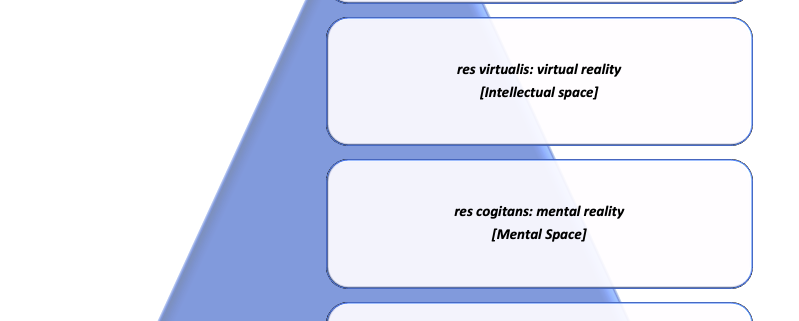
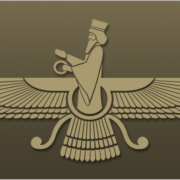
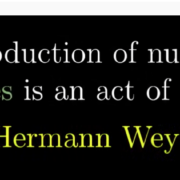



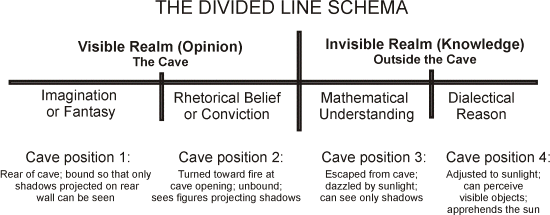
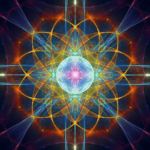 by Leon Van Kraayenburg
by Leon Van Kraayenburg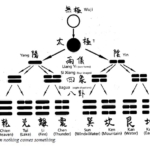
Leave a Reply
Want to join the discussion?Feel free to contribute!